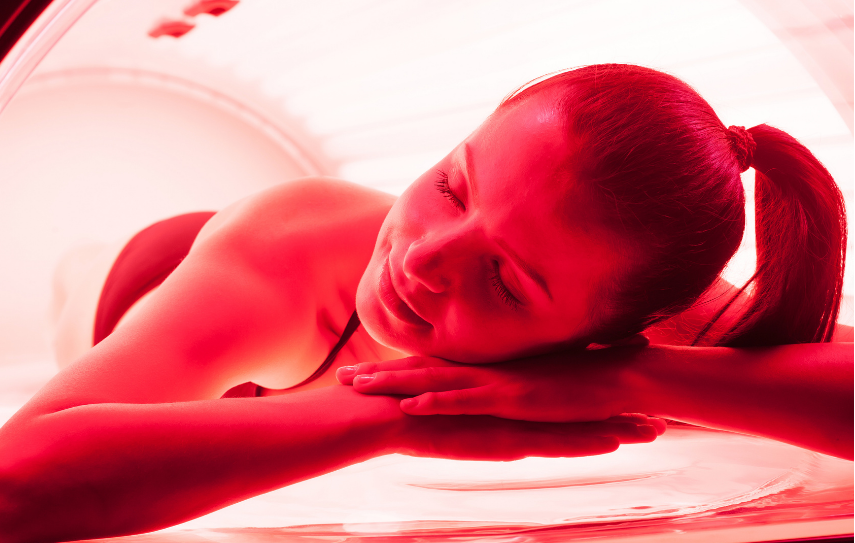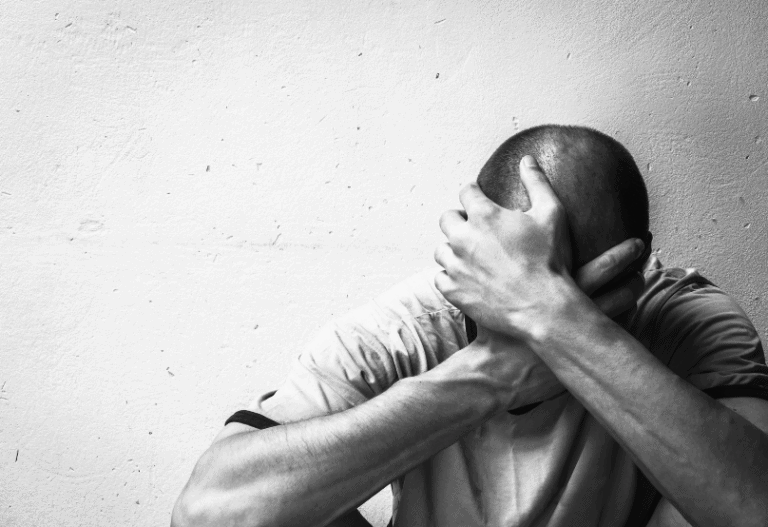Red Light Therapy: An Informative Guide
Red light therapy has recently been the subject of many studies due to its ability to improve physical and mental ailments. Why is this, you may ask? Without light, our bodies cannot function properly or remain healthy. Light is just as important to our health and well-being as food and water. Our bodies require natural light in order to stay healthy and operate properly. Even though we spend more time inside than ever before, light is just as critical as food and water to human well-being.
In fact, light is among the most significant contributors to chronic disease that is forgotten in health care. The prominent culprits of the chronic condition epidemic are blue light at night (which overstimulates) and a lack of natural light in our daily lives. Lack of sunlight is frequently connected to anxiety and depression because low serotonin and dopamine levels may result in disabling mood issues. These mental disorders can be debilitating on their own, and can also lead to another severe disorder: substance addiction.
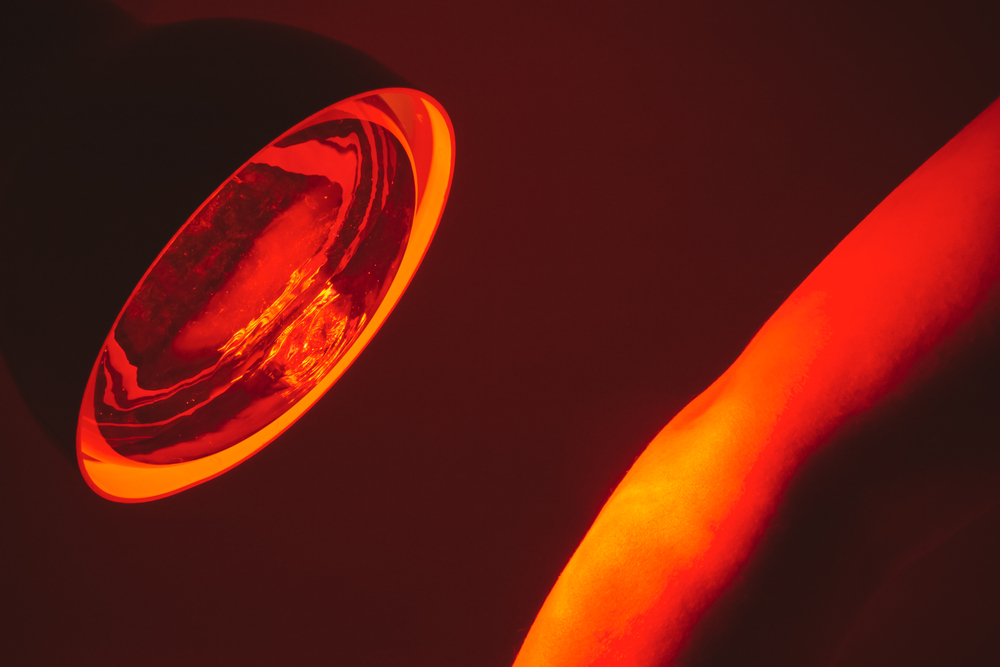
History
Light therapies have been employed for decades to improve the healing process. In 1896, Danish physician Niels Rhyberg Finsen first employed light therapy to cure a skin TB condition as well as smallpox. Finsen’s research revealed that ultraviolet radiation aggravated smallpox wounds, so he removed it, leaving only red light. Red light therapy helped smallpox patients recover more quickly, Finsen discovered. Later, he discovered that ultraviolet light was able to cure tuberculosis.
Because of his treatments, hundreds of patients healed from wounds in 1903, the Nobel Peace Prize in Physiology was awarded to him. Before his demise, he requested that light therapy be made available to everyone. He foresaw that ‘this new therapeutic agent [light] will be used in the future, and once the experiment is completed, it will be relatively easy to perform it practically as Light Baths.’
Scientists observed that red light-emitting diodes (LEDs) produced intense light, which was utilized to increase plant growth and photosynthesis in the 1990s. Intense light emitted by red light-emitting diodes (LEDs) was utilized to promote plant growth and photosynthesis in outer space. Because of this discovery, the red light was examined for its medical potential in order to determine whether red light therapy might promote cellular energy.
Red light, particularly because of its capacity to reduce muscle atrophy as a consequence of aging or physical inactivity, as well as bone density issues caused by weightlessness in space, is said to be an effective treatment for psoriasis, slow-healing wounds, and chemotherapy side effects. While at Knoxville Recovery Center, we utilize red light therapy as an excellent treatment for addiction recovery in addition to its normal results.
How Does it Work?
Low-level light therapy, commonly known as red light therapy, is a form of phototherapy involving red or near-infrared light. Red light devices use LED bulbs to deliver light to the skin. Depending on the strength, red light may penetrate the skin’s outer layer as well as the dermis, the deepest layer of skin. When the red light is absorbed by cells, it may stimulate the creation of collagen, repair tissue, increase oxygenation, and improve circulation. It has also been demonstrated to decrease inflammation and bacteria.
While red light therapy may be administered in a variety of ways, red light therapy light beds are an excellent way to receive this therapy. These full-body beds resemble UV tanning beds—but no UV rays are present, so no skin damage will result.
During a phototherapy session, a person lies in bed with their skin a few inches away from the red lights, which emit a gentle amount of light. Individuals who receive phototherapy treatment report feeling nothing other than a mild warmth. The procedure is safe and painless.
Red Light Therapy for Mental Illness
Red light therapy is particularly effective at improving mental wellbeing and mental clarity. Red light therapy can help improve mental clarity in a variety of ways, including reducing brain inflammation and reducing symptoms of Seasonal Affective Disorder (SAD) and anxiety.
A research study titled “Psychological benefits 2 and 4 weeks after a single treatment with near-infrared light to the forehead: a pilot study of 10 patients with major depression and anxiety” noted improvements in their patients’ depression and anxiety scores at the two-week follow-up. Some patients maintained their improvements at the four-week follow-up as well.
Research has demonstrated that red light therapy can assist with stress regulation and reduction, as well as improving sleep quality, both of which can have a significant impact on mental health and mental clarity.
Red Light Therapy for Anxiety
Anxiety is an inescapable element of life, whether you desire it or not. A person may feel anxious as a consequence of work, education, choices, relationships, and other situations. Fortunately, in most instances, the anxious feeling will disappear over time or can be managed. For those with anxiety disorders, their anxiety doesn’t dissipate over time. In some instances, their anxiety may actually increase as time passes.

Anxiety disorders are divided into three major groups, namely General Anxiety Disorder, Panic Disorder, and phobia-related disorders, all of which are caused by different things. Although each of these will make a person feel some level of unease, a person’s symptoms and behavior will vary according to the type of disorder as a result of the symptoms being so different.
Although red light therapy does not cure mental health problems, it can offer people with anxiety issues several substantial advantages, including:
- Pain Relief – Red light waves are able to increase blood flow and deliver necessary nutrients and oxygen to damaged areas, thus speeding up the recovery and regeneration process. This subsequently reduces pain and swelling. In addition to being less invasive and safer than traditional approaches to pain relief, red light therapy for pain is a less invasive and safe treatment.
- Increased Energy – When the skin absorbs more energy through red light therapy, skin cells become more productive and grow. Throughout the body, this may result in a person feeling more energized in general. In certain situations, having extra energy is exactly what someone needs to combat their anxiety.
- Improved Sleep – Individuals living with an anxiety disorder often have difficulty sleeping. During red light therapy sessions, the lights are used to subconsciously establish the distinction between waking and non-waking hours, making it easier for those using red light therapy to both fall and stay asleep at night.
Red Light Therapy for Depression
In order to effectively treat and manage depression, one must first understand what it is. As stated by the National Institute of Mental Health, depression is a ‘common yet serious mood disorder.’ It may have a variety of serious consequences on a person’s life. Because of depression, a person’s mood, thinking, and daily activity management are all negatively impacted, in addition to their sleeping, eating, and working.
Red light therapy is not a cure for mental health conditions, but it can provide several benefits to those living with the condition. Those benefits can make living with the condition more bearable. These benefits include:
- Increased Energy – When red light therapy is administered, skin cells absorb energy and become more active. It is common for people to feel energized. For those with depression, an extra boost of energy is often just what they need to get through their day.
- Improved Sleep Cycle – Those with depression typically have difficulty sleeping and maintaining a healthy sleep cycle. Fortunately, red light therapy reinforces subconscious associations between waking and non-waking hours. Many recipients of red light therapy report that they not only sleep better, but have healthier sleep cycles as a result.
- Improved Emotional and Mental State – Having a positive state of mind and an improved emotional state can be among the many advantages of using red light therapy. Usually, taking care of one’s body and striving to become healthier leads to improvements in both areas.
Red Light Therapy for PTSD
Understanding how to treat someone with PTSD and why red light therapy works requires an understanding of the condition itself. According to the National Institute on Mental Health, post-traumatic stress disorder (PTSD) is a condition that occurs in some individuals after a shocking, scary, or dangerous event. When humans experience an event or moment like this, their bodies respond with fear.
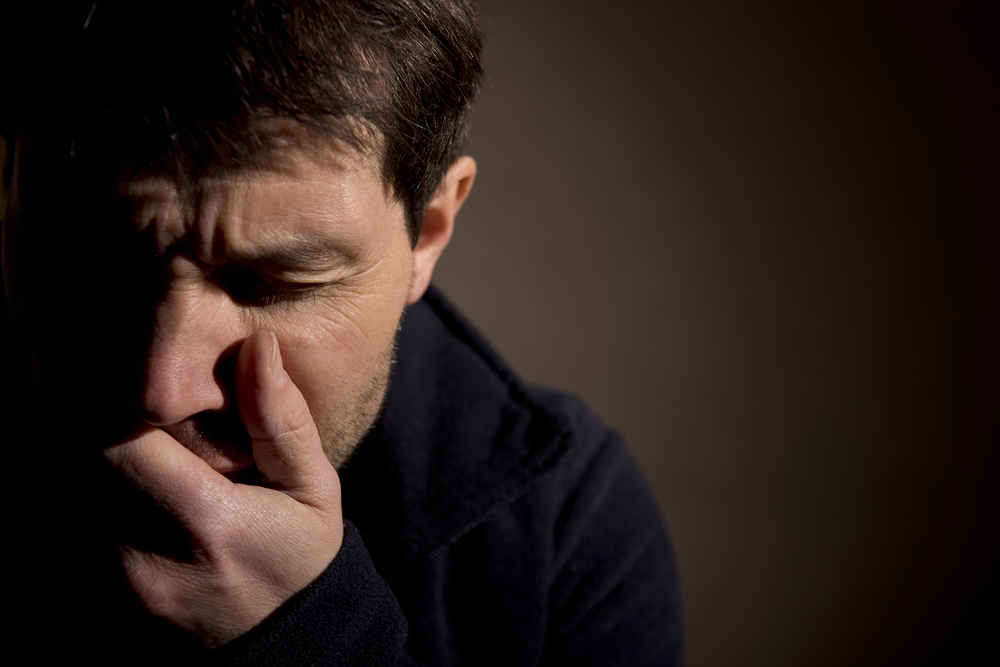
This fear may manifest as one of two responses: fight or flee. When a person naturally reacts to defend themselves or flee from danger, trauma and PTSD can result. While some people quickly recover from such experiences and trauma, others do not and develop PTSD. Treatment for conditions such as PTSD normally includes talk therapy or drugs, but there are other effective procedures and therapies. Red light therapy is one of the most unique but successful approaches. These are the most common benefits of red light therapy for PTSD:
- Relieves Pain – An increase in blood flow to damaged tissues and cellular regeneration is promoted by red light therapy. It has an anti-inflammatory effect to support healing, reducing pain, and improving recovery time, which has a natural anti-inflammatory effect. This is especially beneficial if the traumatic event that caused PTSD involved physical injury.
- Improves Mental Health – There are no cures for PTSD, so red light therapy sessions, which provide relaxation and better sleep, among other things, may help improve mental health. While it’s not a complete cure for PTSD, it does provide a number of physical and mental health benefits. By improving a person’s health on both a physical and mental level, they are better positioned to manage their PTSD symptoms. Red light therapy is used as a physical and mental health treatment.
- Rejuvenates – Those with PTSD often have trouble sleeping or feeling fatigued. Luckily, red light therapy may help. During red light therapy sessions, the light penetrates the skin, delivering energy throughout the body. These lights may also help establish subconscious associations between sleeping and non-sleeping hours, which may assist in developing healthier sleep schedules and obtaining more and better sleep.
Red Light Therapy for Addiction
Coming off drugs and alcohol is a significant aspect of the addiction treatment process, and it often triggers mental stress and withdrawal symptoms. These mental health issues, including Alzheimer’s disease, obsessive-compulsive disorders, and clinical depression, are common as a result. Many therapists and physicians concur that red light therapy may be used to treat these issues as well as addiction in general. There is still much research to be done, and thus these claims are not fully supported by the evidence at present.
The importance of red light laser therapy for addiction recovery is significant. Red light laser therapy has been found to be very effective at treating post-acute withdrawal patients with physical and psychological difficulties such as muscle pain, restless leg syndrome, and insomnia. Clients frequently suffer from PAWS, a post-acute withdrawal syndrome. These clients frequently have bone and tissue injuries, swelling and stiffness, as well as other issues.
In addition to reducing swelling, stiffness, and pain, red light laser therapy has been shown to assist in the healing of bone and tissue wounds as well as wound and burn healing. IV drug users can benefit from the red light charger’s ability to reduce scarring or open wounds on their bodies.
Red Light Therapy for Cocaine Addiction
A study conducted by the University of California San Francisco studied whether laser light therapy could reduce cocaine addiction in rats. Despite initial doubts, the experiment showed that the rats’ addictive behaviors were significantly reduced after being treated with laser lights. Rats with cocaine addictions showed reduced activity in the prelimbic region of their brains after being exposed to red light.

Although red light therapy does not cure cocaine addiction or any other addiction, it can provide those who use it with a variety of benefits that can make recovering from addiction easier. The following are the most common benefits of red light therapy in treating cocaine addiction:
- Energizes – It is true that physics, chemistry, and biology are all complex subjects. In spite of this, every branch of science agrees that light is energy. Using red light, which can more readily penetrate the skin, gives people increased energy. In red light therapy, people who struggle with cocaine addiction often experience increased energy, which helps them maintain a consistent commitment to their recovery.
- Mental Clarity – There are a number of different ways to use red light therapy to help people. It is a treatment that exists to assist people, not just to make them feel better. Although it might not occur after just one session, red light therapy may help someone cope with mental health issues. Individuals with greater mental health are usually more successful at maintaining their sobriety and avoiding a relapse.
- Improves Sleep – Having trouble sleeping is one of the common side effects associated with cocaine use. Red light therapy is an effective solution. When receiving red light therapy, many find it easier to sleep because it reinforces the distinction between waking and sleeping hours in the brain.
Red Light Therapy for Alcoholism
People with alcohol addiction can benefit from light therapy in two ways. The light may help reduce depression and promote a more natural sleep cycle. Boston University researchers evaluated the effectiveness of bright-light therapy and naltrexone in helping people overcome alcohol use disorder. The regimen was highly effective when used within a substance abuse treatment program. Red Light therapy helps clients in treatment for alcoholism in the following ways:
- Restores Mental state – According to research, red light therapy sessions and, more broadly, red light therapy, have been shown to decrease anxiety and tension. This enables an alcoholic who is recovering to calm down, enter a more positive frame of mind, and become less angry. By improving one’s mental state, one will be able to commit to their rehabilitation.
- Reenergizes – When it comes to red light therapy, energy is increased by stimulating cell activity. However, this treatment may cause an increase in energy throughout the whole body, resulting in a jumpstart for patients wishing to both feel better physically and mentally as well as recover from alcoholism.
- Promotes Sleep – Many alcoholics have difficulty sleeping once they become sober, and red light therapy can provide some help. During red light therapy sessions, people have trouble sleeping because of the irregular lighting during their waking hours. Using bright red lights during red light therapy sessions reinforces the distinction between waking hours and those designated for sleeping subconsciously.
Red Light Therapy for Meth Addiction
Meth addiction can be treated effectively with a variety of proven and effective treatments and therapies. Red light therapy is one of them. Although at first glance it might seem ineffective, the science behind red light therapy assures that it can provide former meth users with a number of unique advantages.
- Healthier Skin – Using red light therapy, skin cells are given more energy, which results in skin that is healthier and looks better. With this treatment, former meth users may be able to receive a boost of self-confidence and appear and feel better than ever before.
- Improved Sleep Schedule – Individuals living with meth addiction frequently have difficulty sleeping once they become sober. Red light therapy can help reinforce subconscious waking and sleeping hours, making it easier for the body to fall asleep and know when to sleep. The presence of bright light during red light therapy sessions can also assist with improving sleep and sleep patterns.
- Increases feelings of Optimism – Having a positive mental attitude is one of the best ways for a person with meth addiction to maintain his or her sobriety. Red light therapy can help improve mental health by improving a person’s skin, promoting healthier sleep, and providing them with more energy during the day.
Red Light Therapy for Opioid Addiction
It is vital to recognize that opioid addiction can result in serious health complications. With the help of treatment and therapy, many of these adverse effects may be alleviated with opioid addiction. While this approach may seem unexpected, red light therapy is beneficial to those with opioid addictions. Some of these benefits include:
- Pain Relief – Rather than blocking our perception of pain by using opioids, red light therapy works at a cellular level to promote healthy cell function, thus leading to a pain-free body.
- Increased Energy – Having a substance addiction can be difficult to live with, but the red light used in red light therapy sessions can help those struggling with an opioid addiction to maintain their sobriety. As skin cell energy increases, red light therapy sessions can often lead to an increase in overall energy.
- Repairs Damaged Skin – The use of red light therapy can help rejuvenate skin, in addition to providing numerous other health benefits. Skin cells function better after red light therapy, resulting in healthier, more attractive skin that can help make a person feel and look better. IV opioid users can benefit from red light’s ability to reduce scarring or open wounds on their bodies due to drug use.
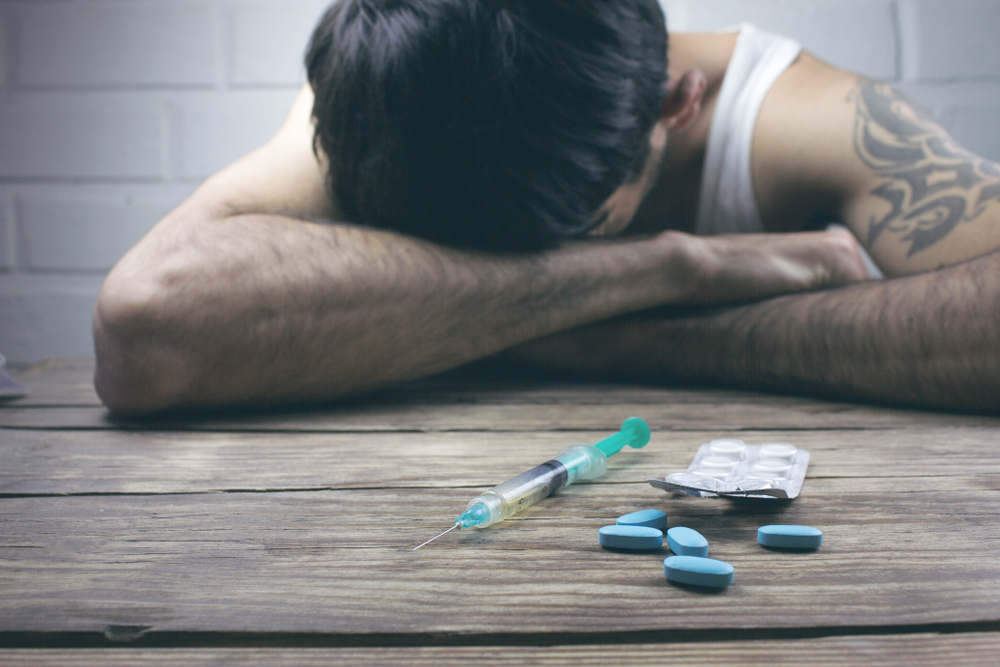
Non-Addiction Related Red Light Therapy Benefits
There are a large number of advantages to red light therapy for the general population beyond treating addiction. You may even find red light therapy beds for sale that differ greatly in quality and price from those used in professional clinics. Because they are not considered medical devices, anyone may purchase them for commercial or home use.
- Treats Joint Pain – Red light and near-infrared wavelengths have been employed in the treatment of arthritis since the late 1980s. Hundreds of clinical trials have been conducted to determine the parameters of effectiveness. It has been scientifically researched for over 40 years, and it is recommended for all individuals with arthritis, regardless of its cause or severity.
- Promotes Hair Growth – Having more blood flowing to the scalp gives hair follicles better access to oxygen, which in turn produces certain anti-inflammatory and antioxidant substances. These substances are produced by mitochondria and then delivered to the hair follicle.
- Treats Hyperpigmentation – Hyperpigmentation is caused when damaged or inflamed skin cells generate excessive amounts of melanin, resulting in dark spots or patches of skin. Age spots, sunspots, melasma, and postinflammatory hyperpigmentation (PIH) are all types of hyperpigmentation.
Trust Oasis Recovery
If you or a loved one is interested in red light therapy, or any alternative therapies, contact us today! Oasis Recovery was founded by people in recovery who have a personal understanding of the journey to recovery. We know that recovery is always possible and we work with you to create a treatment plan that suits your needs. Our treatment options include:
- Intensive Outpatient Program
- Partial Hospitalization Program
- Aftercare Planning
- Detox Refferals
- Mental Health Referrals
Contact us today for more information about how our treatment programs and services can help you get your life back on track. You do not have to struggle on your own. We are here to help.



